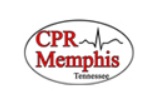Staphylococcus aureus | Microbiology Unknown Lab Report
Call Us Now
Get the Best CPR Class in Memphis Today!
UNKNOWN LAB REPORT
Unknown Number 103 (Staphylococcus aureus and Klebsiella pneumoniae)
Michelle Gudorp
General Microbiology
Spring 2013
Call Us Now
Get the Best CPR Class in Memphis Today!
INTRODUCTION
It is important to understand why a person would want to identify between different bacteria. In order for an individual to receive treatment for a certain bacterium, this bacterium must first be identified. This is done because some treatments may fight against one bacterium, while another treatment may not work to fight off a different bacterium. The purpose for this study is for the microorganism to be identified. The study below was performed by following the different techniques and methods taught in the microbiology lab class throughout the semester.
MATERIALS AND METHODS
After a semester of learning different techniques and methods to identify between different bacteria, the instructor distributed a test tube labeled 103 with an unknown substance inside. The goal is to correctly identify two different bacteria, one being Gram positive and the other Gram negative. In order to identify these bacteria, a series of different laboratory tests must be done. In addition to using sterile technique, the procedures for these tests were followed via the lab manual for general microbiology created by McDonald, Thoele, Salsgiver, and Gero (1), unless otherwise stated in this report.
The first thing to be done is to try and isolate the two bacteria with the goal of obtaining a pure culture. This is done by streaking a Trypticase Soy Agar (TSA) plate using the streak method as stated in the lab manual. After incubating the TSA plate for 24-48 hours the bacterium grew and their characteristics were recorded. Since there was not a distinct difference between two colonies, the same method was used again on another TSA plate. After checking back in another 24-48 hours, two different distinct colonies grew in the agar plate and from this, another procedure was done. In order to obtain a pure culture, two TSA plates were labeled; one with Unknown “A” and the other Unknown “B”. Each colony was then isolated once again using the streak method from the lab manual and then put into the incubator. Once checking and recording the results two days later, the next step was to perform a gram stain on pure culture “A” and pure culture “B”. While practicing sterile technique is important for each procedure to reduce the risk of contamination, it is also extremely important to be extra careful when doing a gram stain that you use the proper technique provided for you in the lab manual. This is because, not only does a gram stain tell whether the bacterium is gram positive or negative, it also tells what shape the bacterium is. It was concluded that unknown “A” was gram positive cocci and unknown “B” was gram negative rods. After this was determined, specific biochemical tests were performed. These biochemical tests were determined by using the Unknown Chart given out by the lab instructor. The following Tables and Flowcharts give a guideline as to which tests were performed and there outcomes for both Gram Positive and Gram Negative bacteria.
The following tests were performed on the Unknown “A” (Gram Positive)
- Gram stain
- Urea test
- Nitrate test
- Mannitol test
The following tests were performed on the Unknown “B” (Gram Negative)
- Gram stain
- Mannitol test
- Methyl Red test
- Indole test
RESULTS
Unknown 103: Unknown A (Gram Positive)
After evaluating a pure culture of Unknown “A”, it was determined there was growth that consisted of a medium sized yellow to cream colored colony. After doing a gram stain, it was determined that this bacterium was Gram positive cocci. At this point a urea test was performed. An inoculating loop was sterilized, and the urea test tube was inoculated with the bacteria. Please see Table 1 for a complete list of each test, purpose, reagents, observations and results for each test conducted. Flowchart 1 is also available for the results of this unknown.
Unknown 103: Unknown B (Gram Negative)
After evaluating a pure culture of Unknown “B”, it was determined the growth of this bacteria to be a colony of very small dots, white in color. When doing a gram stain the results showed that the bacterium was Gram negative rods. A Mannitol Salt Agar plate was obtained in order to test for mannitol fermentation. An inoculating loop was sterilized, a sample of Unknown “B” was collected and a streak was made on the agar plate. Please see Table 2 for a complete list of each test, purpose, reagents, observations and results for each test performed on Unknown “B”. Flowchart 2 is also available for the results of this unknown.
TABLE 1. Unknown A: Gram + bacteria
| TEST | PURPOSE | REAGENTS | OBSERVATIONS | RESULTS |
| Gram Stain | Determine the shape of the bacterium/whether it’s gram +/- | Crystal Violet, Iodine, Safranin and Alcohol | Purple cocci | Gram positive cocci |
| Urea test | Determine if bacteria breaks down urea with urease | None | No color change. Tube remained yellow | Negative for urease |
| Nitrate test | Determine if bacteria can reduce nitrate to nitrite | Reagent A&B, Zinc | Test tube turned red after adding Reagent A | Positive for nitrate |
| Mannitol test | Determine if bacteria can ferment mannitol | none | Agar turned from a red color to a yellow color | Positive for mannitol |
TABLE 2. Unknown B: Gram – bacteria
| TEST | PURPOSE | REAGENTS | OBSERVATIONS | RESULTS |
| Gram Stain | Determine the shape of the bacterium/whether it’s gram +/- | Crystal Violet, Grams Iodine, Gram Safranin and Alcohol | Reddish pink rods | Gram negative rods |
| Mannitol test | Determine if bacteria can ferment mannitol | none | One side of agar turned yellow, while the other remained red | Positive for mannitol |
| Methyl Red test | Determines if bacteria can produce acid that ferment glucose | Methyl Red | Color change from yellow to red | Positive for Methyl Red |
| Indole test | See if a bacterium has tryptophanase to convert tryptophan to indole. | none | Test tube stayed the same color as it was before being inoculated | Negative for tryptophanase |
FLOWCHART 1
UNKNOWN #103 Unknown “A”(Gram Positive)
Gram stain
Gram positive cocci
Staphylococcus aureus
Staphylococcus epidermidis
Enterococcus faecalis
Urea Test (negative result)
Positive Negative
Staphylococcus epidermidis Staphylococcus aureus
Enterococcus faecalis
Nitrate test (positive result)
Positive Negative
Staphylococcus aureus Enterococcus faecalis
Mannitol Test (positive result)
Staphylococcus aureus
FLOWCHART 2
UNKNOWN 103: Unknown “B” (Gram Negative)
Gram Stain
Gram negative rods
Mannitol Agar (MSA) (positive result)
Positive Negative
Escherichia coli Proteus vulgaris
Klebsiella pneumoniae Pseudomonas aeruginosa
Methyl Red test (positive result)
Positive Negative
Escherichia coli Enterobacter aerogenes
Klebsiella pneumoniae
Indole test (negative result)
Positive Negative
Escherichia coli Klebsiella pneumoniae
DISCUSSION/CONCLUSIONS
Unknown “A” (gram positive)
After doing a gram stain on the bacteria, it was determined that it was gram positive cocci. The next step was to go on with a second procedure, which was a Urea test. The object of this test was to find out which bacteria can or cannot produce urease to break down urea. The negative results of this test narrowed the search down to Staphylococcus aureus or Enterococcus faecalis. From there, a Nitrate test was performed. This test shows whether or not a bacterium can reduce nitrate to nitrite. A positive reaction for nitrate occurs when reagents a and b are added and once reagent a is added, the test tube turns red in color. Since both of these tests were positive, this eliminated Enterococcus faecalis from the list. After eliminating this bacterium, the only one left was Staphylococcus aureus. To be sure of the results, a Mannitol test was done to check to see if the bacteria could ferment mannitol. After incubating for 48 hours, the agar plate turned yellow on one side and stayed red on the other. This is an indication of a positive test. Therefore, this ensures that Unknown “A” is indeed Staphylococcus aureus.
Unknown “B” (gram negative)
After doing a gram stain on the bacterium, it was determined that this bacterium was a gram negative. The next step was to continue with another test. A Mannitol agar plate was obtained and inoculated with the bacterium. The purpose for this is to see if the bacterium can ferment mannitol. Once observing that half of the plate was yellow, this means the results were positive for mannitol. By doing this test, Proteus vulgaris and Pseudomonas aeruginosa were eliminated from the list. Since Escherichia coli, Klebsiella pneumoniae, and Enterobacter aerogenes are left, another test was performed to eliminate more bacteria. The next test was a Methyl Red test. This is used to find out if a bacterium can produce acid that ferments glucose. After incubation and adding the methyl red drops to the results, the test tube turned red in color; a positive test for methyl red. This leaves either Escherichia coli or Klebsiella pneumoniae. The final test done was an Indole test. This test is used to see if a bacterium has the enzyme tryptophanase to convert tryptophan to indole. When this happens, the top of the test tube will turn a reddish pink color. Once checking the results 24-48 hours later, the test tube had not changed since before it was put into the incubator which means the test was negative for Indole. Therefore, this means that Unknown “B” is Klebsiella pneumoniae.
Staphylococcus aureus (S. aureus) is a gram positive bacterium that when looked at under a microscope it appears to be a cluster of what looks like purple circles. This shape is known as cocci. When grown on a TSA plate, Staphylococcus aureus appears to be yellow to opaque in color. S. aureus is known as one of the most resistant bacterium to multiple antibiotics and considered the most pathogenic. Everyone is susceptible to S. aureus with one way of transmission being from foods such as chicken, eggs, meat, and tuna which can all cause food poisoning. Another way of transmitting the disease would be from your skin. Staphylococcus aureus resides on a person’s skin on a daily basis and when the barrier is broken from things such as cuts or wounds, this then provides an excellent entry way for the bacterium. Drug users are also extremely susceptible to this bacterium because they may choose to inject themselves with needles which can cause the likeliness of the bacterium entering your body (3). It has also been found that Staphylococcus aureus plays a huge role in Methicillin resistant Staphylococcal aureus otherwise termed MRSA. This bacterium can become resistant to many antibiotics such as methicillin, cephalosporins and erythromycin which make it much more difficult to treat. In order to try and treat MRSA vancomycin is administered to the patient. Even with this drug, researchers have found that MRSA is also becoming resistant to vancomycin as well. The prevention of this bacterium could help to minimize nosocomial infections by practicing good hygiene and appropriate cleansing of surgical incisions and burns (2).
In conclusion, it was found that the gram positive bacterium was indeed Staphylococcus aureus and the gram negative bacterium was Klebsiella pneumoniae. One problem that was difficult to overcome was maintaining sterile technique while inoculating both agar plates and test tubes. The isolation was difficult to do because two attempts were made to obtain a pure culture. After three weeks of performing different tests, the results show the correct identification of the unknown bacteria.
REFERENCES
- McDonald, Virginia, Mary Thoele, Bill Salsgiver, and Susie Gero. Lab Manual for General Microbiology. 2011. 1-91. Print.
- Talaro, Kathleen, and Barry Chess. Foundations in Microbiology. 8th ed. New York: Mcgraw-Hill, 2012. 540-45. Print.
- “What is Staphylococcus aureus?.” EHA Consulting Group. N.p., n.d. Web. 25 Apr 2013. <http://www.ehagroup.com/resources/pathogens/staphylococcus-aureus/>.









